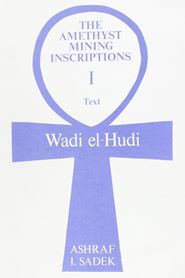| Main » Ad Board » ДРЕВЕН ЕГИПЕТ И АФРИКА » Литература |
| 08.06.2024, 17:50 | |
Малцина възприемат древните египтяни като пътешественици-авантюристи, но в действителност те са известни изследователи на едни от най-негостоприемните и опасни райони на Земята, като например Източната пустиня между долината на Нил и Червено море. Този изключително труден за оцеляване регион е обект на особен интерес през епохата на Средното царство. Тогава там са изпращани многолюдни експедиции на държавни разноски, които да копаят скъпоценен камък - аметист в мините на Уади ел Худи, в района на Асуан. Освен различни други следи от своето присъствие, членовете на тези експедиции оставят и около 280 наскални надписа, разказващи за нелеката им съдба, начина им на живот, приключенията им и други теми, които ги вълнуват. АЛТЕРНАТИВЕН ЛИНК / ALTERNATIVE LINK: - на древноегипетски език (йероглифи и латинска транслитерация) и английски език, от Google Drive, формат PDF. Сваляне с ляв бутон (downloading by left button) от страницата на предоставящия сървър, после през бутона стрелка надолу/after by down arrow button.
| |
| Views: 694 | Placed till: 25.12.2024 | Rating: 0.0/0 | |

